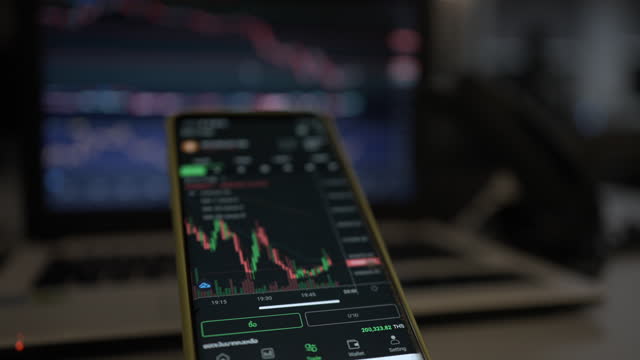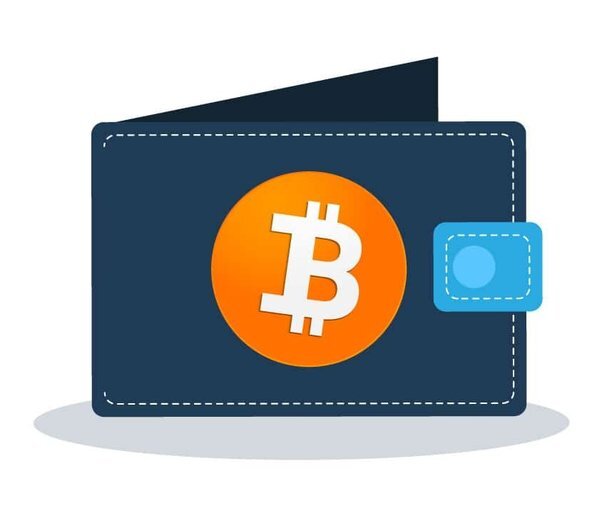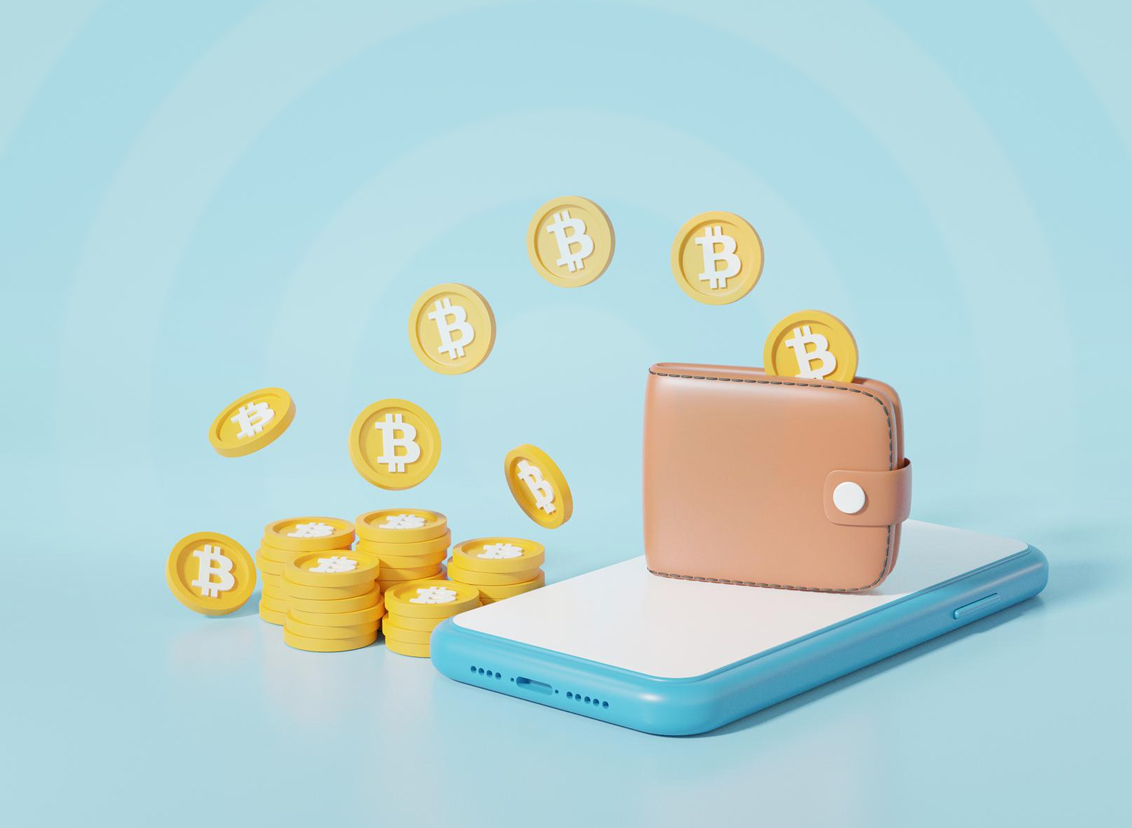Starting a cryptocurrency conversation without mentioning Bitcoin (BTC) is like talking about foreign exchange without mentioning US Dollars. It just doesn’t feel right. As digital currencies continue to become popular, having a secure and reliable way to manage your Bitcoins is important.
A Bitcoin wallet acts like your personal digital bank account that allows you to store, send, receive, and manage your BTC at your convenience. In this easy-to-understand beginner’s guide, I’ll be taking you through the process of creating your Bitcoin wallet, ensuring that you’re well-equipped to manage your BTC.
What is a Bitcoin Wallet?
A Bitcoin wallet is a digital wallet that allows you to manage your Bitcoins. It’s just like a physical wallet that holds cash or cards or a bank account where you keep your money. Think of it as a secure virtual pocket where you can store, send, and receive your Bitcoins.
Since BTC is a digital currency, a Bitcoin wallet doesn’t actually hold any physical coins. It contains a set of cryptographic keys that allow you to access and control your assets on the Bitcoin network.
There’s a public key, which is the address you share with others to receive BTC, and a private key, which is the secret code that gives you ownership and control over your Bitcoins.
With your Bitcoin wallet, you can view your BTC balance, initiate transactions, and keep track of your Bitcoin activity in the cryptocurrency world.
How To Create and Set Up Your Bitcoin Wallet

Even as a beginner who has never used a cryptocurrency wallet, creating and setting up your Bitcoin wallet is as easy as ABC. No technicalities whatsoever, just straight to the point. Follow the simple steps below to create and set up your Bitcoin wallet.
1. Choose your preferred wallet: Do some research and try to find a trustworthy Bitcoin wallet online or through an App Store. Make sure whatever wallet you choose is a reputable one with strong security features to keep your Bitcoins safe.
Coinosh is a decentralized crypto wallet that is reliable, beginner-friendly, and easy to use wallet with robust security features. With this wallet, you can rest assured that your BTC is safe, secure, and readily accessible whenever you need it.
2. Install the wallet: When you’ve chosen a wallet to use, download and install the wallet on your device. If you use an Android device, download the app from the Google Play Store or download the app from the App Store if you use an iOS device.
3. Create a new wallet: After installing your preferred wallet on your device, open the app and choose the option to create a new wallet. When you create a new wallet, most crypto apps will automatically set up a Bitcoin wallet/storage space for you.
Bitcoin is the leading cryptocurrency and is compatible with most, if not all crypto wallets. So when you create a new crypto wallet, it automatically comes with a BTC wallet. It may also come with wallets for other leading coins like Ethereum and Solana.
4. Secure Your Wallet: After creating your Bitcoin wallet, you should create a password for security if you weren’t prompted to do so at the beginning. Go to your wallet settings, and you should find an option that will allow you to create a password.
Make sure that whatever password you set for your Bitcoin wallet is strong and cannot be guessed easily. Also, avoid making common mistakes when using your BTC wallet.
5. Backup your wallet: Depending on the kind of crypto wallet you choose, you might be given a set of words called a recovery or seed phrase. For others, you might have to get the recovery phrase from your wallet settings.
Your recovery phrase is the key to recovering your wallet from a backup in case you ever lose access to your BTC wallet. Make sure you write your recovery phrase down and keep it safe.
6. Generate Your Bitcoin Address: To do this, navigate to your Bitcoin wallet on the platform and look for the “Receive” or “Get Bitcoin” option. This will give you a long string of numbers and letters – that’s your public key/Bitcoin address.
7. Receive or Buy Bitcoin: After generating your Bitcoin receiving address, you can ask someone to send you some BTC. If you can’t get anyone to do so, you can buy Bitcoin from an exchange with Fiat currency.
8. Send Bitcoin: When you’ve gotten some BTC, whether, from an exchange or someone else, you should try sending some to someone else or to another Bitcoin address of yours.
To send Bitcoin, find the “Send” option in your wallet. Enter the recipient’s Bitcoin address and the amount of BTC, and hit send.
And like that, you’ve successfully created and set up your Bitcoin wallet for optimal functionality.
How to Choose a Bitcoin Wallet

The best Bitcoin wallet for you depends on your personal needs and preferences, there’s no one-size-fits-all. There are different types of crypto wallets like mobile wallets, web wallets, hardware wallets, paper wallets, etc.
What would determine which one you choose depends on what you want and how you plan to use the wallet. Let’s discuss the factors you should consider when choosing a Bitcoin wallet.
1. Security: Your Bitcoins are valuable, so keeping them secure is essential. If you will be using a mobile wallet, look for wallets that offer strong encryption and two-factor authentication.
Hardware wallets generally provide better security because they’re offline and not as susceptible to online threats.
2. Convenience: Think about how you plan to use your Bitcoins. If you plan to make transactions frequently, a mobile wallet might be the most convenient. If you want flexibility to access your wallet from different devices, a web wallet could be a good fit.
3. Control: Do you want full control over your Bitcoins? Non-custodial wallets give you more control, as your private keys are stored on your device. On the other hand, exchange wallets might offer convenience, but that also means you’re entrusting your Bitcoins to a third party.
4. Amount of Bitcoin: Consider how much Bitcoin you’ll be dealing with. For larger amounts, you should consider investing in the security of hardware wallets. On the other hand, a mobile or web will suffice for smaller amounts.
5. User Experience: A user-friendly interface makes a big difference. As a beginner, you won’t want to be struggling with your wallet every time you need to make a transaction. Coinosh is a beginner-friendly wallet with intuitive navigation, making it very easy to use.
6. Backup and Recovery: Accidents happen. That’s why it’s important to choose a wallet that allows you to easily back up and recover your wallet in case your device is lost or damaged. Coinosh provides you with recovery phrases that serve as backup.
7. Reputation: Stick with wallets from reputable sources. Read reviews, check their history, and make sure they have a strong track record of security and customer satisfaction.
8. Fees: Some wallets charge transaction fees. While these fees are often minimal, they can add up over time. Research and compare fee structures before making a decision.
Frequently Asked Questions about Bitcoin Wallets
1. Can I buy BTC in my Bitcoin wallet?
You don’t buy BTC directly from your Bitcoin wallet. Instead, you buy BTC from cryptocurrency exchanges using regular money and then send the bought BTC to your wallet’s unique address for safekeeping.
2. Can I cash out my Bitcoin wallet?
Technically, you can’t ‘cash out’ your Bitcoin wallet, but you can sell your BTC for fiat currency. Not all crypto wallets provide you the option of selling your BTC for cash, so you might have to send your BTC to a crypto exchange and sell it there.
However, with Coinosh wallet, you have the option to sell your BTC for immediate funds.
3. What is a Bitcoin wallet address?
A Bitcoin wallet address is like your digital address where others send you Bitcoin, and in turn, you receive Bitcoin. It’s a long string of letters and numbers.
4. Which Bitcoin wallet is the best?
The best wallet for you depends on your preferences. Mobile wallets are handy for quick access, while hardware wallets offer top-notch security. Research options like mobile, web, desktop, and hardware wallets to find what suits your needs.
5. Can a Bitcoin wallet be traced?
Bitcoin transactions are public on the blockchain, which shows the movement of BTC. However, wallet ownership isn’t always directly traceable unless you reveal your identity through transactions or other means.
Conclusion
Summing up, Bitcoin is a big player in the cryptocurrency world, and you need a Bitcoin wallet to play. A Bitcoin wallet allows you to store, send, and receive BTC. Luckily, creating your Bitcoin wallet is very easy. Now that you know how to create and set up one, you’re all set to dive into the crypto world.
Also, don’t forget the important factors to consider when choosing a Bitcoin wallet. This will help you ensure that the Bitcoin wallet you pick is well-suited for your needs and preferences. As you go ahead and manage your BTC with your Bitcoin wallet, ensure that you do your part to keep it safe.
